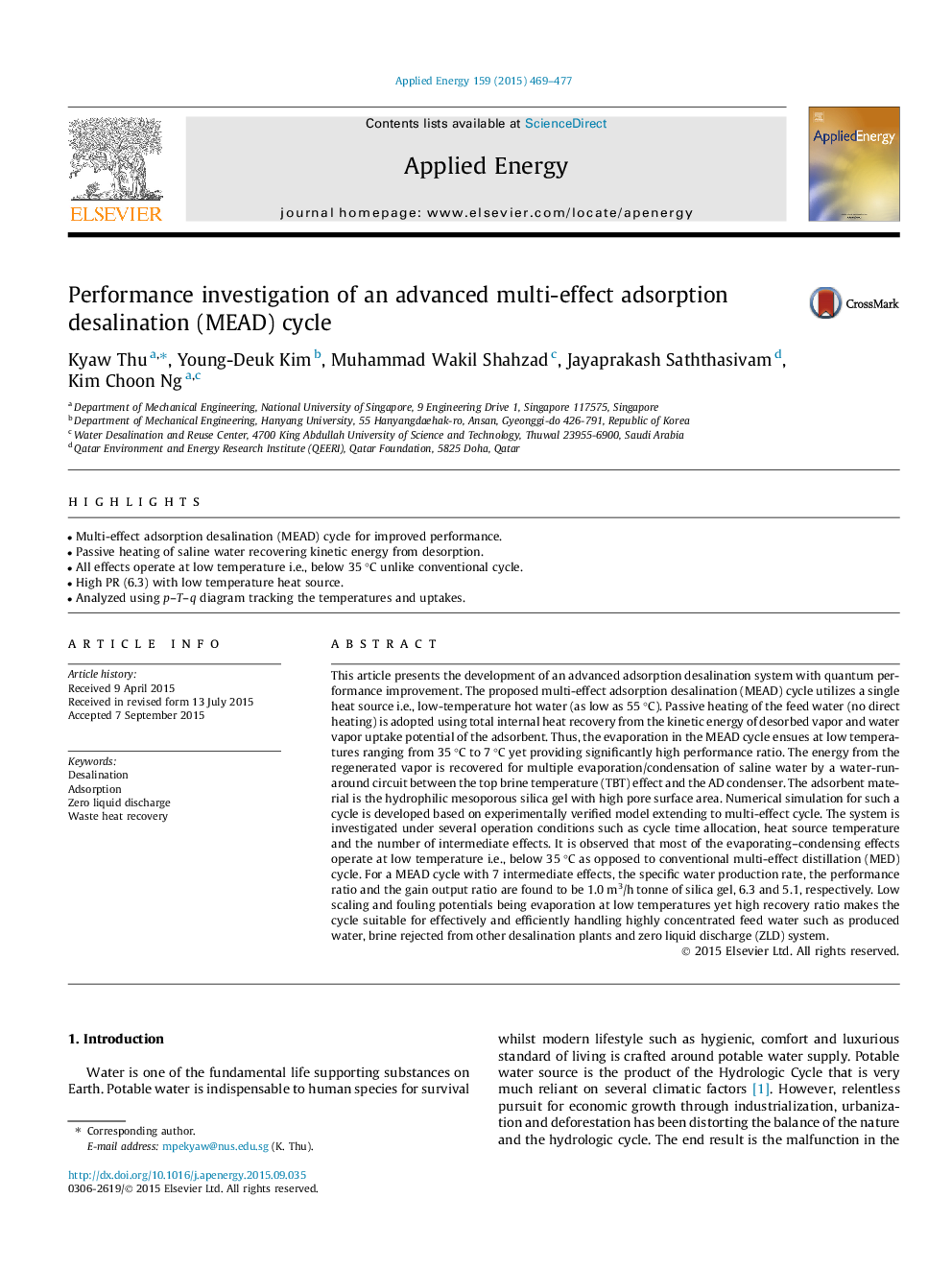| کد مقاله | کد نشریه | سال انتشار | مقاله انگلیسی | نسخه تمام متن |
|---|---|---|---|---|
| 6685621 | 501866 | 2015 | 9 صفحه PDF | دانلود رایگان |
عنوان انگلیسی مقاله ISI
Performance investigation of an advanced multi-effect adsorption desalination (MEAD) cycle
دانلود مقاله + سفارش ترجمه
دانلود مقاله ISI انگلیسی
رایگان برای ایرانیان
کلمات کلیدی
موضوعات مرتبط
مهندسی و علوم پایه
مهندسی انرژی
مهندسی انرژی و فناوری های برق
پیش نمایش صفحه اول مقاله

چکیده انگلیسی
This article presents the development of an advanced adsorption desalination system with quantum performance improvement. The proposed multi-effect adsorption desalination (MEAD) cycle utilizes a single heat source i.e., low-temperature hot water (as low as 55 °C). Passive heating of the feed water (no direct heating) is adopted using total internal heat recovery from the kinetic energy of desorbed vapor and water vapor uptake potential of the adsorbent. Thus, the evaporation in the MEAD cycle ensues at low temperatures ranging from 35 °C to 7 °C yet providing significantly high performance ratio. The energy from the regenerated vapor is recovered for multiple evaporation/condensation of saline water by a water-run-around circuit between the top brine temperature (TBT) effect and the AD condenser. The adsorbent material is the hydrophilic mesoporous silica gel with high pore surface area. Numerical simulation for such a cycle is developed based on experimentally verified model extending to multi-effect cycle. The system is investigated under several operation conditions such as cycle time allocation, heat source temperature and the number of intermediate effects. It is observed that most of the evaporating-condensing effects operate at low temperature i.e., below 35 °C as opposed to conventional multi-effect distillation (MED) cycle. For a MEAD cycle with 7 intermediate effects, the specific water production rate, the performance ratio and the gain output ratio are found to be 1.0 m3/h tonne of silica gel, 6.3 and 5.1, respectively. Low scaling and fouling potentials being evaporation at low temperatures yet high recovery ratio makes the cycle suitable for effectively and efficiently handling highly concentrated feed water such as produced water, brine rejected from other desalination plants and zero liquid discharge (ZLD) system.
ناشر
Database: Elsevier - ScienceDirect (ساینس دایرکت)
Journal: Applied Energy - Volume 159, 1 December 2015, Pages 469-477
Journal: Applied Energy - Volume 159, 1 December 2015, Pages 469-477
نویسندگان
Kyaw Thu, Young-Deuk Kim, Muhammad Wakil Shahzad, Jayaprakash Saththasivam, Kim Choon Ng,